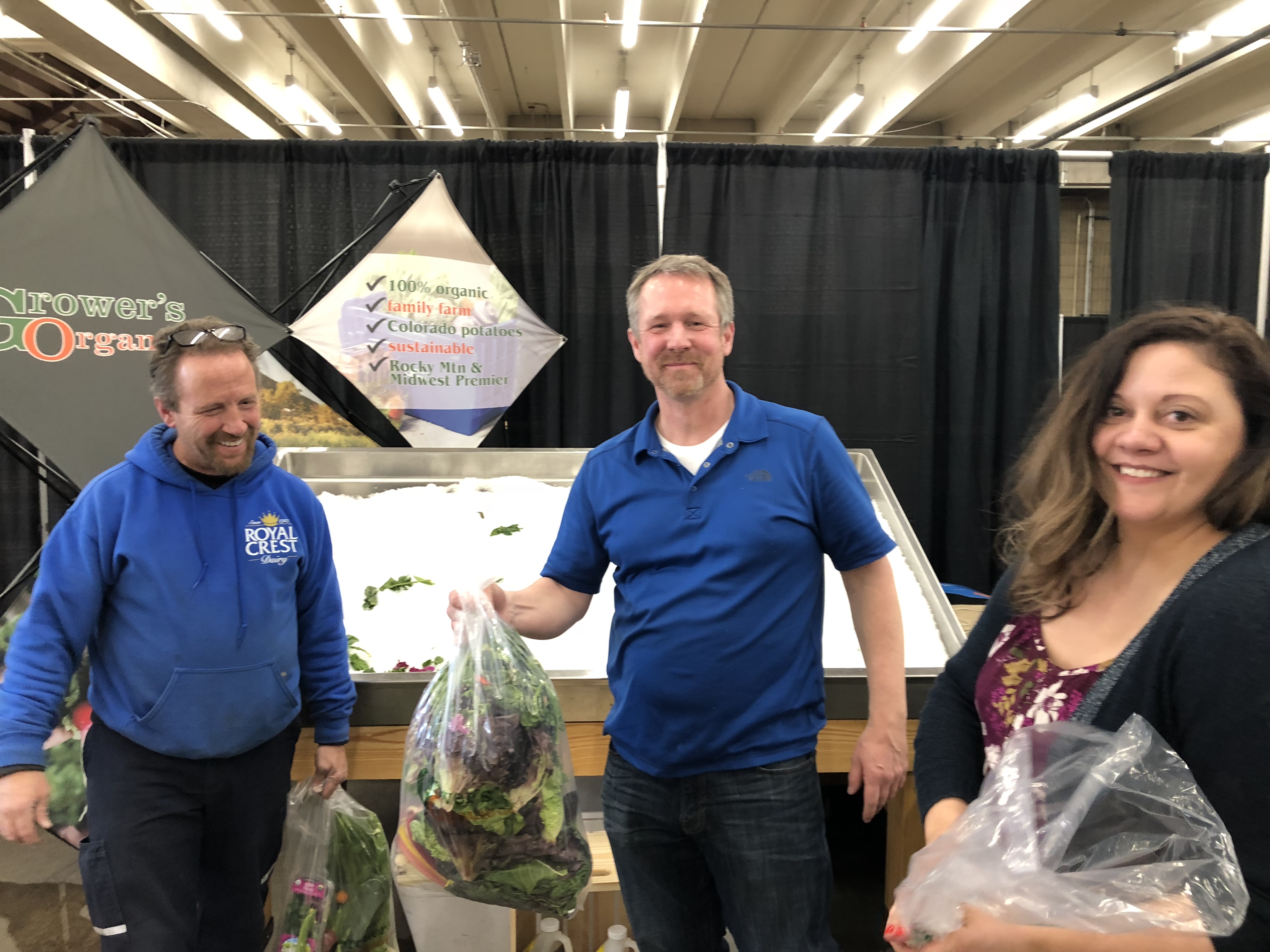On March 6, more than 120 Colorado food and beverage companies gathered to network at the Eat Colorado Food Show. Hosted by EatDenver — among other partners and sponsors like Slow Food Denver, Colorado State University, Good Food 100, Whole Foods and more — the event showcased much of what the food industry in our state has to offer.
More than 700 people attended the event — including restaurants sourcing directors, chefs, caterers, grocers, hospitals, education leaders and curious food lovers like us. It almost doubled in attendance from the last business-to-business farmers market EatDenver hosted in 2016, and this year there was a waitlist to be a vendor.
There are Lots of Local Products Worth Seeking
Among the more than 120 vendors were farmers, ranchers, beverage producers, food products, distributors and zero waste street vendors. (Note — minus a few, the full list is here.) There were familiar faces from Infinite Monkey Theorem, Stem Ciders, Laws Whiskey House, etc., but there were also a lot of new faces we’re excited to get to know.
For example, Roberto Meza from Emerald Gardens from Broomfield showcased his microgreens company, a passion project he started after falling ill in years past and healing himself through dietary changes. Across the way, Chad Nelan at Elevation Meats handed out salami samples in flavors we’ve never heard of — including Mexican Mole, Barleywine and Mustard Seed and a 7-Day Sour Ale, made with Trinity Brewing‘s golden sour. In another corner, Teatulia (whose founder is from Colorado) distributed samples of its newest beverage that hasn’t even hit the market yet — tea sodas.
If you’re looking to support local, we highly suggest checking out the vendor list and supporting some of these companies. From sauces and bread to pickles and pretzels, there truly is something local for every taste.
Colorado Food Can Be a Catalyst for Change

While the business-to-business farmers market buzzed inside the National Western Complex Exhibit Hall, various speakers hosted seminars in the back restaurant — including a pig butchery demo with Blackbelly and a Food Buyer Panel with The Kitchen, Whole Foods, Snooze and Johnson & Wales on how to make local sourcing work.
We were most inspired by Good Food 100‘s discussion on the economic impact of making responsible sourcing decisions. Founder Sara Brito started the non-profit to create the “Inc. 500 of food sourcing” — a way to quantify restaurants’ efforts to make better food choices. It goes beyond sourcing “local” to analyzing a restaurant’s impact on all food issues — from human rights to representation.
She, along with Fruition and Mercantile’s owner Alex Seidel — discussed how much impact the list and rating system have already been able to demonstrate. For example, the studies — independently analyzed by CU Boulder — show that the 35 participating Colorado restaurants last year have made a $15 million positive impact on Colorado’s local economy.
The room was packed with people hoping to learn ways that everyone in the industry can make a positive impact on the food system — from a sourcing director to a chef.
“No one in this room has to wait for Washington to make a change,” Brito said. “Menus are more than a listing of what to eat that day, they are catalysts for change… Good food is about more than taste. For food to be good, it needs to be good at every link in the food chain.”
Seidel shared his experiences and praise for Good Food 100 as a cost-free way to quantify any restaurants’ “good food” efforts. It’s great for producers and consumers because it provides a verified list of responsible restaurants to — what he calls — the “new generation of eaters that want to know.”
“I do want people to connect with us as a restaurant that makes responsible decisions as food purchasers,” he said. “… and I love [Denver]. I want it to be the best. I want the entire culinary community to grow.”
Collaboration is at the Forefront
In a room that should have felt competitive, we only felt collaboration. Although the hundreds of vendors needed to stand out to gain the attention of attendees, they seemed more interested in elevating the industry as a whole.
Vendors pointed us to other “competing” booths to gather more information — like Liz Nail from Mile High Fungi, who explained that she’s more interested in elevating the state of Colorado as a destination for great mushrooms than she is with her business specifically dominating the space.
Because no sales were permitted on the property (only samples!), the last half-hour became more of a trading post of goods — with vendors making trades like local pickles for fresh-made baguettes. And, many companies bagged leftovers to donate to the Denver Food Rescue, like Grower’s Organic, pictured above.
“We’re all coming together for the same purpose: to create more meaning and goodness in the food that we grow, prepare, serve, eat, and share,” Lazor explained. “It’s important to come together in person to taste, share ideas, and spread excitement about what’s happening in our incredible food community. This was a one-day event, but more importantly, this community is the heart and soul of what’s driving our exciting food community and dining scene.”
Unless noted, all photos by Alexandra Palmerton.






